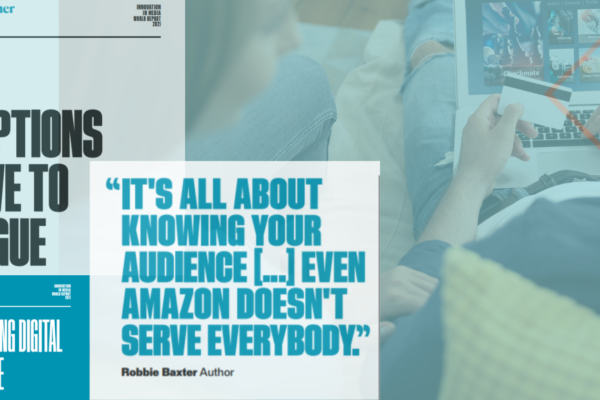[From the Innovation Report] Direct-to-consumer: the reader-first approach that is revolutionising subscriptions
As the ground on which publishers and advertisers have built their historic alliance gets shakier, direct-to-consumer (D2C) is stepping in take to its place. In fact, D2C is not new, but is actually an updated version of a bond that goes back much further, and much deeper: the one between readers and publishers.
Three of the pillars of D2C are memberships, subscriptions, and partnerships, which invite readers to become brand ambassadors of sorts by offering a significantly better reader experience. This can include, most obviously, access to more content – but also exclusive events, freebies, and social perks, such as being part of a club.
Other ideas in the D2C matrix include e-learning, integrated e-commerce, or a designated shopping platform. Licensed products, bookazines, subscription boxes and affiliate revenue can all be set up to generate extra revenue.
With many publishers having taken a hit during the pandemic, the stakes are high: according to the authors of the FIPP Innovation in Media 2021 World Report, “successful media companies must morph from the dying transactional, print-advertising business model to a lasting and profitable reader-relationship model” – or face the chop.
So what should media companies be doing?
Align with readers – and make friends with data
Going back to basics, publishers who demonstrate the strongest commitment to creating value for readers are the same ones who reap the rewards of stronger performances in subscriptions.
Publishers should be continually giving readers reasons to come back to them: “It’s all about knowing your audience,” says Robbie Baxter, author of The Membership Economy and The Forever Transaction. “Even Amazon doesn’t serve everybody.”
Moving away from a “volume mindset” of pursuing as many subscribers as possible at all costs, publishers instead need a strong, clear, and focused vision, a reader-first mindset, a granular understanding of their audience through data (and a commitment to analysing that data), and a culture of experimentation across the entire company, where everyone buys in and new ideas are encouraged.
Capitalise on trust
In the cold light of the post-Covid world, absorbing the news through social media doesn’t seem like such a good idea any more. As evidenced by rising subscriptions during the past year, well-researched, trustworthy information comes at a premium in times of crisis, which has been great for publishers who have been able to rise to the challenge.
Le Parisien, for instance, doubled both its digital subscribers and its digital subscription revenue between early 2020 and the end of the year by making “premium” articles available only to subscribers. They also made the site a hybrid of metered and paywalled content, according to Sophie Gourmelen, Managing Director and Publisher of Le Parisien speaking to WAN-IFRA.
The collective experience of living through the pandemic has altered many people’s approach to news and media consumption. Now is not the time to take refuge in old ways, but for publishers to channel some of that goodwill and ask readers to pay.
Make the most of online events and offerings
With the pandemic driving us all to spend more time than ever in front of a screen, digital and hybrid offerings have flourished. And why stop now? Our slow emergence from lockdowns calls for bold ideas that respond not only to people’s increased willingness to pay for content, but to try new things online, such as digital events, webinars, festivals and MOOCs.
After a slightly bumpy transition, media companies have made online events succeed beyond anyone’s most optimistic expectations when the lockdowns first hit. From Condé Nast’s virtual programming, which has topped more than 150 online events globally, to Tortoise’s ThinkIns, which attract anywhere between 200 and 2,000 attendees compared to the in-person maximum of 120, interest doesn’t seem to be waning.
“Events will never be the same again,” write the IIM21 authors, “and that’s a good thing.”
Offer flexibility to keep loyalty intact
Finally, loyalty is hard won, and it is paramount to nurture these most important of relationships. Subscriptions are superior to one-off payments in many ways – chiefly the chance to interact with audiences on an ongoing basis, and the opportunity to acquire deeper, longer-term insights about consumer behaviour. The conversion from passing visitor to faithful subscriber is just the beginning of that journey.
Sometimes people need a break and offering degrees of distance, rather than full severance or full membership, can be a positive way to stay connected with audiences. Audible, for instance, offers those who attempt to cancel their subscription one free credit (worth one audiobook) or three months at a discounted rate. Indie movie streaming site MUBI, like many companies in the troubled times of the pandemic, now offers the option to “pause” a membership. This allows people to take a breather without breaking their loyalty, says Robbie Baxter.
Learn much, much more about all aspects of D2C. Click here to access the full 2021 Innovation in Media Report which, in addition to D2C, analyses topics such as the post-Covid workplace, recruitment, podcasting, sustainability, monetisation and more.










